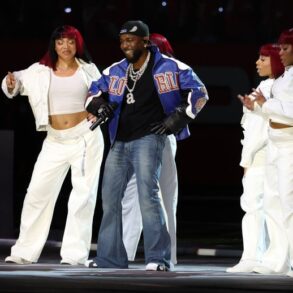Michelle Cordeiro Grant is a tinkerer by trade–not of gadgets, but of fast-growing companies, making adjustment after adjustment until something clicks. And after building two multimillion-dollar businesses, she’s seen the results of this approach pay off. “You tinker until you get the numbers and the results you want,” she says.
Cordeiro Grant, who recently spoke at the 2023 Inc. 5000 Conference about fast growth, launched the intimates brand Lively in 2016 and sold it for an estimated $105 million in 2019. For her next feat, she wanted to make the wellness category more fun, she says, and saw an opportunity in energy drinks.
In 2022, she launched Gorgie, an energy drink brand “clean enough for Whole Foods, cool enough for fashion, fun enough to post,” she says. Now, with seven figures in revenue and cans in thousands of retailers, Cordeiro Grant is targeting eight figures in 2024.
Here’s what she learned from playing the growth game:
Let the consumer surprise you
Early on, Gorgie ran “social experiments” with groups of consumers, Cordeiro Grant says, which led to unexpected insights. For instance, the team assumed that customers would want 200 milligrams of caffeine, the standard for multiple energy brands, but soon realized that customers would only finish half of the can.
So, two weeks before launching at Whole Foods in the Northeast, the team scrambled to reformulate. “By reducing our caffeine levels, adjusting the benefits, the taste got even better,” Cordeiro Grant says.
Likewise, when Cordeiro Grant started building Gorgie, she envisioned a “by women, for women” brand, but soon saw more men picking up the product than she expected. She ultimately shifted to a “by women, for all” approach, she says, and started placing the product at golf outings and other events to reach more male consumers.
The way customers bought these products also surprised Cordeiro Grant. While the direct-to-consumer model worked well with Lively, the native website sales for Gorgie weren’t blowing her away. The team decided to try selling on Amazon, which quickly led to double-digit conversion rates. “You just have to go where the consumer is telling you to go,” she says.
Build strong partnerships
Gorgie launched at Whole Foods in the Northeast, and Cordeiro Grant worked to build a mutually beneficial partnership with the retailer. Around the time of Gorgie’s launch, Whole Foods was opening a new location at One Wall Street in New York City, she says, so the Gorgie team visited numerous office buildings and fitness studios in the area to tell customers about both Whole Foods’ opening and Gorgie.
“They gave us more placements in the store because they saw what we were doing. They even let us have a tent in front of Whole Foods on the store opening,” Cordeiro Grant says. This exemplifies what she calls a “two-way street of support” with business partnerships.
Cordeiro Grant also learned the importance of being selective with partnerships. “While we’ve been able to gain the trust of all of these partners, we have to respect those partnerships and say polite noes now,” she says. “A good no today is a better yes tomorrow.”
Always think ahead
Founders need to think long-term even in the early stages, Cordeiro Grant argues, because repeat customers determine the “staying power of a brand.” Sure, acquiring customers might be the first priority for a growing business, but figuring out why those customers love your product and what brings them back can truly propel growth, she adds.
Cordeiro Grant built loyalty the old-fashioned way in Gorgie’s early days: standing in Whole Foods and talking to customers. On social media, she keeps an active eye on comments and posts of products by consumers. “You have to just be crazy curious,” Cordeiro Grant says.
Curiosity can also be a powerful tool when looking for new and fruitful avenues for the business. Cordeiro Grant points to a recent announcement from Amazon and Meta about a new feature allowing customers to buy Amazon products from advertisements on Facebook and Instagram without leaving the apps.
“You always have to really vet and be on the forefront of what’s next, whether it was TikTok or ChatGPT or something like Amazon and Meta partnering,” she says. “These are all open pastures.”
EXPLORE MORE Female Founders COMPANIES
This post was originally published on this site be sure to check out more of their content.






